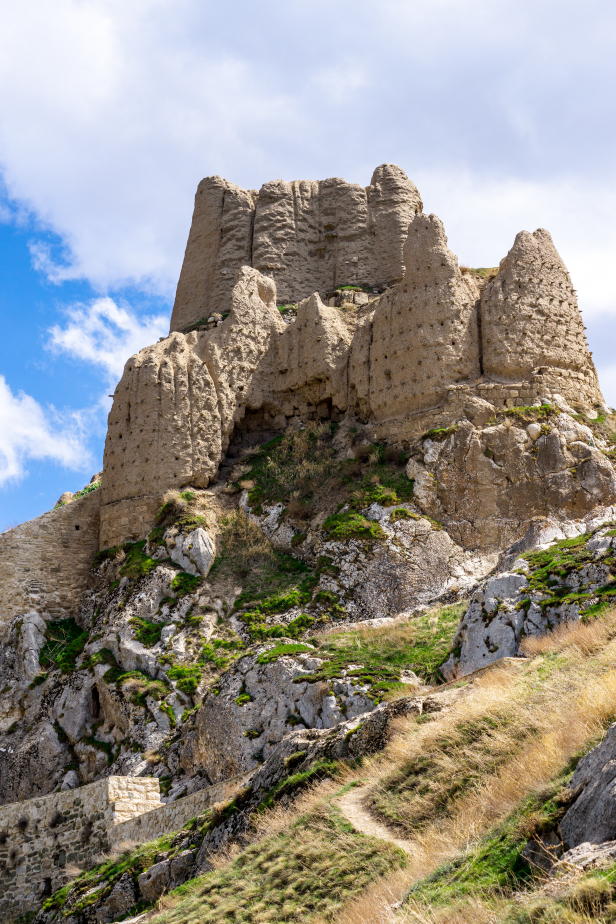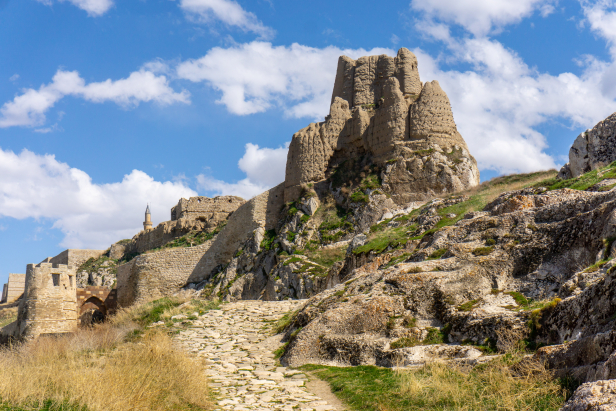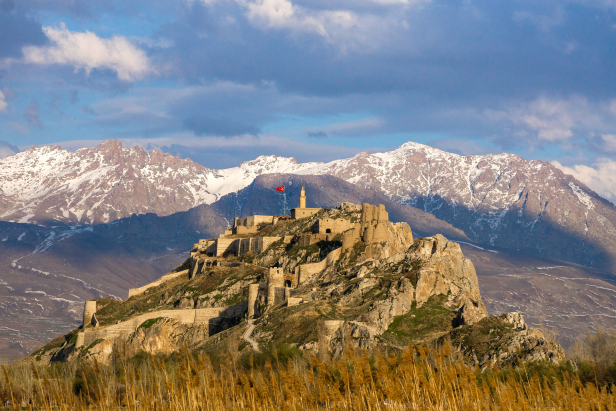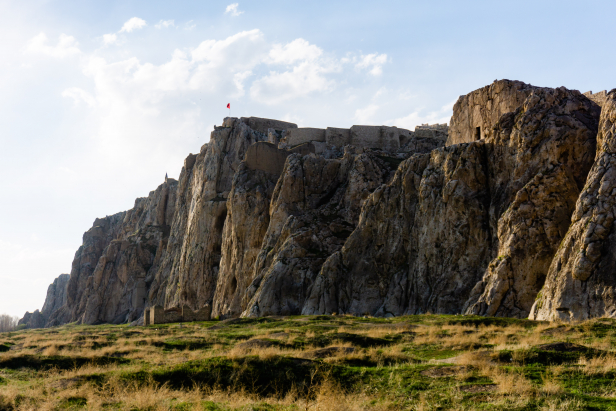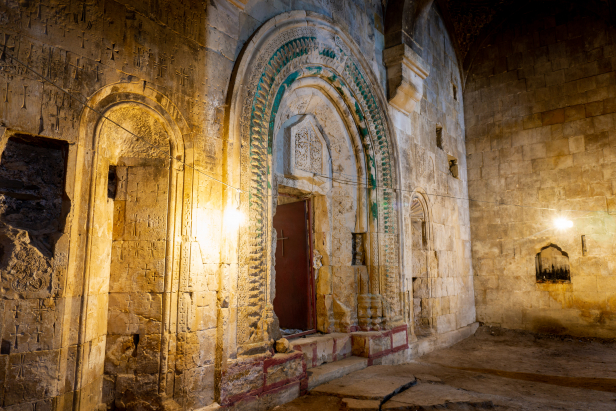The City of Van and Ancient Tushpa
/ By Josh
The City of Van and its nearby sites is without a doubt one of the true highlights of South-Eastern Turkey. Its dramatic setting of soaring mountains and a colossal lake serve as a backdrop to this city of ancient churches, mysterious shrines, and imposing castles. It even makes for a great view if you’re just sitting down for Turkey’s most famous breakfast or petting its most iconic cat.
While all of Turkey is rich in history, Van offers something fairly unique to the region. Often on the edges of history the peoples that made this area their home, the Urartians and Armenians in particular, developed their own distinctive languages, cultures, and architectural traditions, the remains of which are scattered throughout the region.
Subscribe to The Art of Wayfaring
Brief History of Van
The city of Van sits in a highland of rugged mountains, tempered by Lake Van which adds humidity and keeps the seasons relatively mild compared to the wider region. With water, fertile plains, and a strong natural defensive site, it was a prime location for ancient cultures to grow. The Castle of Van, built atop a massive 1200 meter-long ridge of limestone jutting out from the flat plain has been settled for three thousand years.
The oldest city in what is now known as Van was the Urartu city of Tushpa. On the north side of Van Castle you can find the remains of the city, a low mound made up of layers of cities built one on top of the other, dating back to 5000 BC.
The Urartians made their capital here at Tushpa and grew both geographically and culturally in the early Iron Age in the vacuum created by the collapse of the other great Bronze Age civilizations: the Hittites and Assyrians. The Urartian kingdom and culture, grew, flourished for a time and, around 590 BC it too collapsed.
In its place the Armenian culture took root, and while they would not always rule the region, they would remain in the land for over 2000 years. The oldest record of the Armenians here comes from a Persian inscription dated to 522 BC, that lists the Satrapy of Armenia as a subject state. While Armenian territories fluctuated in size, Van continued to be one of their most important centers with kings and monks building beautiful churches and monasteries on the island and mountain slopes.
While the people of Van continued to be largely Armenian, rulership of Van changed hands many times. After the fall of the old Persian Empire (Achaemenid) to the Alexander the Great, control of Van was given to the Macedonian Greeks, Romans, Byzantines, Sassanians, Seljuks, Timurids, Russians, and, upon occasion, the Armenians also ruled it.
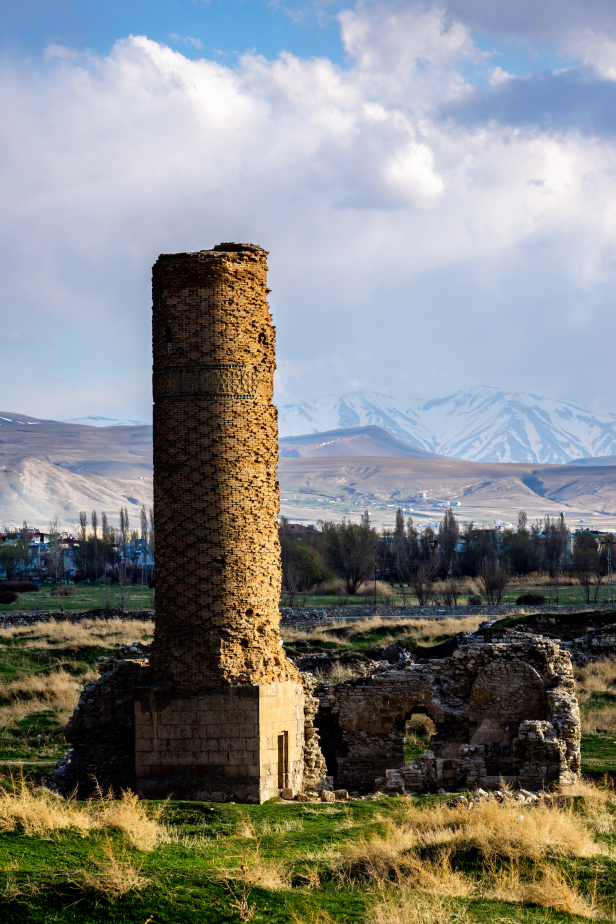
Whether a conquered people or independent, the Armenians developed their own arts and architectural traditions building beautiful edifices such as Akdamar Church or Varagavank Monastery. This history came to a violent and abrupt end in 1915.
The history of this period is a mire of politics, intentional misinformation, and deep emotions that the passing of 100 years has done nothing to dull.
While the Armenian population of Anatolia had been an integrated part of the Ottoman Empire for centuries, even serving as statesmen and soldiers, the mid to late 1800’s was marked by a growing suspicion and oppression of minority peoples following the loss of Ottoman territory to independence movements around the empire.
Spurred on by dreams of self-rule and the support of the Imperial Russian Army, the Armenians rebelled. The Ottoman reaction came in 1915 and resulted in anywhere from 600,000 to 1.5 million dead.
Turkish accounts tend to focus on the events that followed immediately afterwards when, in late 1915 the Russian Army succeeded in taking Van and in turn the Muslim inhabitants suffered revenge. By 1917 the Russian Empire had collapsed due to revolution and the territory once again returned to the Turks. In the subsequent years the vast majority of the remaining Armenians left Anatolia.
In the course of this conflict the old city of Van was destroyed and the majority of its inhabitants, of all ethnicities, had been killed or fled.
Why Visit?
Van Castle and Tushpa
Van Kalesi ve Tuşpa
Cost: 12.50
Museum Card is Accepted
A short distance from the shores of Lake Van is the imposing natural site that first attracted the ancient people to build their city here. Over 1200 meters long, 70-80 meters wide, and rising 100 meters above the lake level, the Rock of Van was the perfect combination of defensible location with access to agriculture lands, and water.
The original site of Tushpa dates back to 5000 BC and was established at the foot of the castle rock. This site consisted of mud-brick structures, with new settlements built on the ruins of the previous, and, like most Neolithic-chalcolithic sites, there is little here to see for the average visitor.
At least as far back as the 9th century BC the Urartians began to fortify the Rock of Van, cutting steps and terraces into the limestone to lay the foundations of walls, towers, shrines, chamber tombs, and stables. Over the millennia the Castle of Van was expanded and altered by the many different people who ruled the site, right up to the Ottoman period when barracks were added to the upper portion of the mount.
With the different eras came different building technologies and wealth and so the ruins today are a complete mix of massive six-meter-long Urartu period blocks, coarse rubble masonry, and mud-brick.
Entering the museum at the entrance which is at the western end of the castle, the first site you’ll come to is a collection of “Van Houses” built using the style and methods that you would have seen in the early 20th century before the destruction of the city.
At the foot of the rock’s western tip is one of the oldest known structures of Van Castle known as Sardur Tower. Built during the 9th century BC the remains are four meters high and bare six identical cuneiform inscriptions commemorating king Sardur and his founding of the castle.
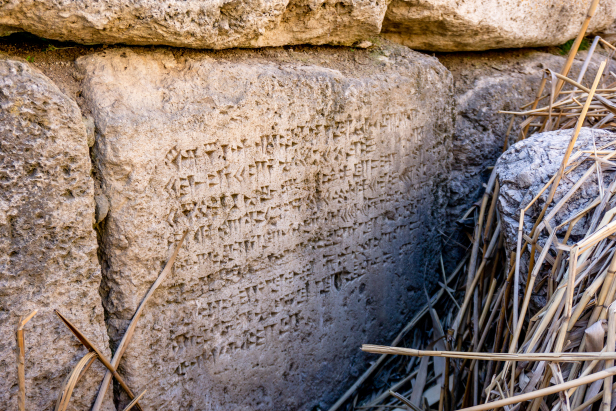
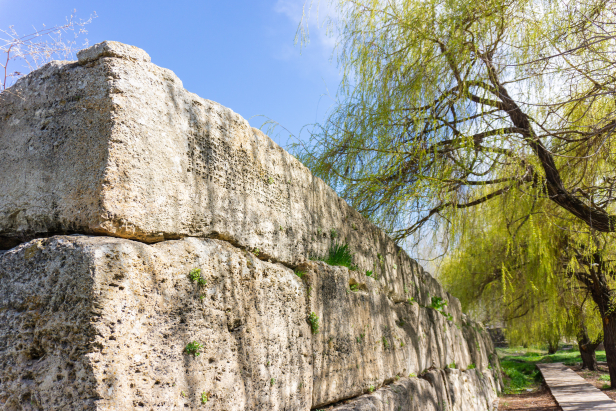
On the northern slope of the castle, across from the Van Urartu Museum, there is a wide flat space carved into the pale limestone with a pair of tall niches cut into the back wall of bedrock. Now known as the Mother and Daughter Niches, this was once a temple site and in the niches you can still see the inscriptions of Sardur II, commemorating the feats of the king.

One of the most famous sights at the Castle of Van is actually only visible from the ruins of Old Van, on the south side of the castle ridge. Carved into the high limestone cliff is the inscription of Xerxes the Great, ruler of the Persian Achaemenid Empire. The inscription is written in three languages, Old Persian, Median, and Babylonian and is the only Old Persian inscription found outside of Persia itself.


The Old Persian portion of the inscription is given more space and larger lettering, and praises Darius the Great, father of Xerxes, as well Ahura Mazda, chief god in the Zoroastrian religion.
It was from this southern face of the castle mound that Tamerlane (Timur), conqueror of much of Central Asia and the Middle East, threw 7,000 of the city’s inhabitants to their death in the 14th century.
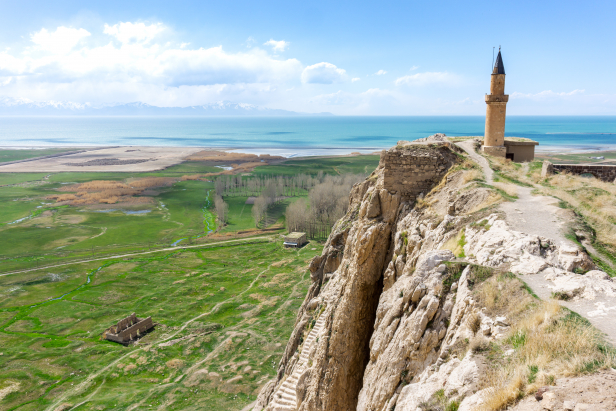
Old Van
Eski Van
Cost: Free
As the city of Van/Tushpa grew, the settlement began to spread out around the base of Van Castle, mostly on the north side where the slopes up to the castle are gentler compared to the sheer cliffs on the south face. Around 800 years ago that changed with the establishing of a fortified city on the south side. Walls were built on three sides and the cliffs of Van Castle served to protect the city in the north.
At the point of Old Van’s destruction the city was filled with mosques, churches, markets, bath houses, shops, and homes for its 80,000 inhabitants. The majority of these buildings were made of mud-brick with flat earthen roofs, so when the city was destroyed, much of it simply returned back to soil with small hills and holes where buildings once were and where looters later dug for treasure. Numerous springs throughout the site make for a muddy walk so bring good footwear.
For whatever reason this area is not part of the museum and to access it you’ll need to go around the fence at the western or eastern tips of the Van Castle or go through the rebuilt Middle Gate on the southern edge of the city. There were two gates beside the heavily restored Middle Gate, the Harbour Gate in the western wall, and the Tabriz Gate in the eastern wall, neither of which have survived.

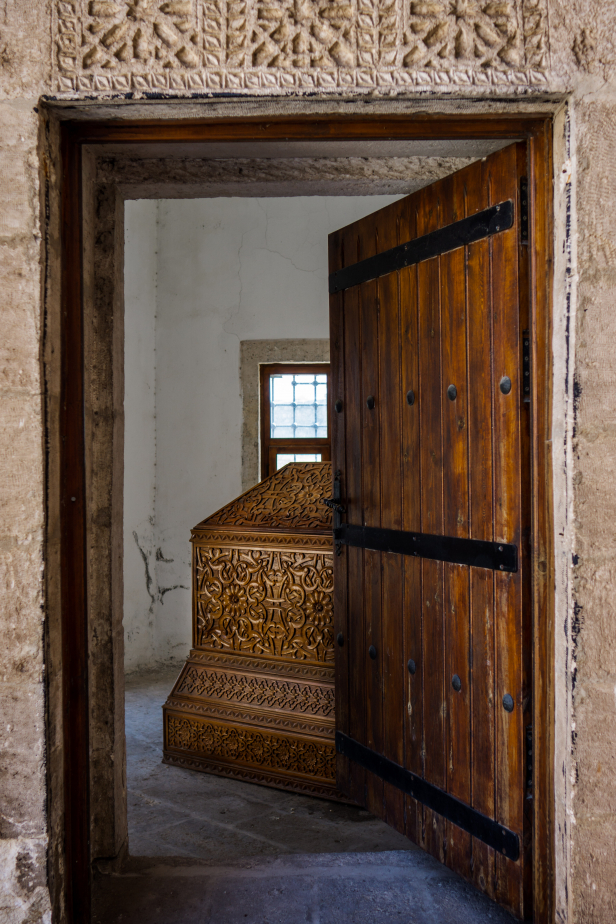
Nearest to the Middle Gate you will see the recently restored Hüsrev Paşa Mosque, built by Mimar Sinan in a typical Ottoman style for the period blended with the red and white stripes more popular in the Arab states. The mosque was built along with a soup kitchen and school in 1567. The tomb of Hüsrev Paşa was added a few years later upon his death.
To the east of Hüsrev Paşa Mosque you can see its twin, the Kaya Çelebi Mosque, built in a similar style during the 17th century. Both of these mosques were heavily damaged during the fires and fighting of 1915.
Straight ahead from the Middle gate towards the cliffs of Van Castle you can see the remaining stump of a large brick minaret. Apart from some heaped foundations and stones, this is all that remains of the Great Mosque of Van. The mosque is believed to have been built sometime in the 12th century during Ahlatşah rule of the city (a branch of the Karakoyunlu Turks).
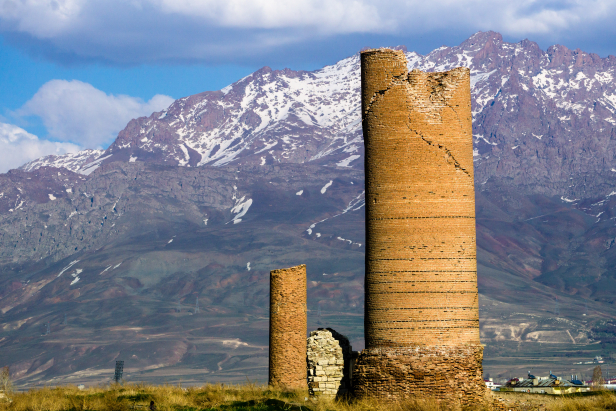
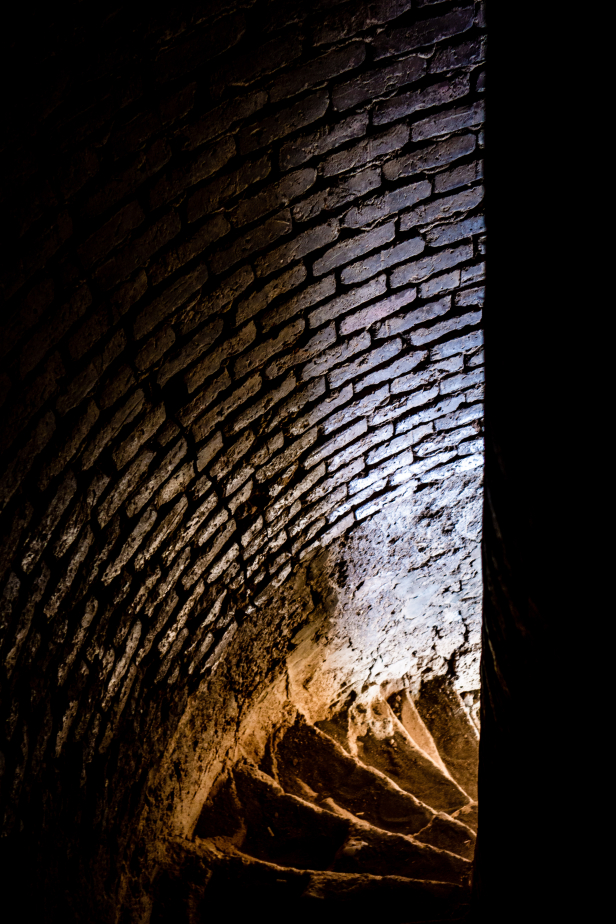
To the east you can see another ruinous minaret, this one with a diamond pattern of glazed brickwork. This minaret belonged to a mosque known as the Red Minaret Mosque, though almost nothing is known about the history of this building apart from the fact that it was built during the Seljuk Turk period, likely in the 13th century.
Subscribe to The Art of Wayfaring
While Van has been ruled by various Islamic kingdoms and empires for the majority of the last 1000 years, much of the population was Christian, and the ruins of a number of churches can still be seen in the old city still. Near the Kaya Çelebi Mosque is a small, rectangular block of a building, recently restored. This is Dsirvanarov Chapel, though restorations seem to have been a bit heavy handed and it’s difficult to tell what elements are original. The chapel consists of a small vaulted space with an apse in the eastern wall with a small window.

In the north-eastern corner of the city, built right at the foot of the cliff are the remains of a pair of ruined churches. The church closer to the eastern wall is the Church of Surp Vardan (Saint Vardan) and the one to the west is the Church of Surp Stephanos (St Steven). Both are quite ruinous though Surp Vardan, built of somewhat finer masonry, seems to have fared better. Vardan also still bears some traces of geometric patterns painted on the interior walls. The cliff face behind these churches is covered in dozens of crosses carved into the cliffs.

Van Museum
Van Müzesi
Cost: 12.5
Museum Card is Accepted
The Van Museum, often referred to as the Urartu Museum, should be a part of any visit to Van. While the sites themselves are beautiful and impressive, the museum tells the story and displays the craftsmanship and artistry of the people who lived there.
The Van Museum displays items from all eras, ranging from the Neolithic, to the height of the Urartu iron age, and down into the modern. Weapons, bronze pins, ancient tools, and armour are displayed along with massive stones covered in inscriptions, and realistic copies of shrines and Urartian charioteers.

Van Cat House
Van Kedisi Evi
Cost: Free
Free to see the cats but if you want to enter and feed them 10TL
If you’re less into ruins than you are into cats, then this is a good break from ruins. The Van Cat House is a simple enclosure with 6-10 endemic Van Cats inside. The cats are white, often long haired, and have one blue and one amber coloured eye. You can pop by and see the cats or, for a small fee go inside and feed the cats who will likely want to climb on you and sit in your lap.

The Meher Gate Monument
Meher Kapısı
Cost: Free
Relatively small and moderately impressive, the Meher Gate monument has been invaluable for archaeologists. The site consists of a tall narrow niche carved into a section of cliff, with a lower space carved flat below. The back of the niche is covered in a massive inscription, containing the longest Urartian religious text found to date. It is thought that the lower section was used for sacrifice and other religious practices.
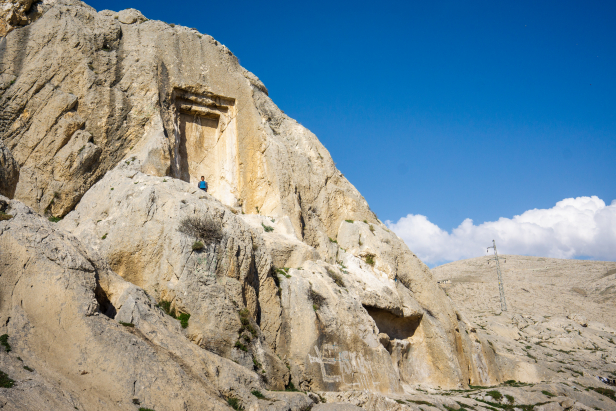
The Tastes of Van
Van’da Meşhur Yemekleri
Cost: Varies
Van Breakfast – Van Kahvaltısı
Turkish breakfast is a big deal, and Van’s version of it is the biggest. The meal consists of little dishes of jams, honey (on and off the comb), tahini, grape molasses, tomato paste dips, a variety of olives, cheeses, sliced cucumbers and tomatoes, breads, boiled eggs, börek, fried eggs with sausage, French fries, clotted cream, and to wash it down an endless flow of Turkish Tea.
Van Herb Cheese – Otlu Peynir
A cheese making tradition going back over two hundred years this hard salty cheese is typically made using sheep milk (though cow and goat milk can be mixed in) and a mix of wild herbs. This herb cheese is a must in any good Van Breakfast.
İnce Kefala Fish
Though considered a fresh-water lake, the waters of Lake Van are actually slightly saline and high in soda content making it inhospitable to all but the İnce Kefala Fish. While the fish is called a “Pearl Mullet” it is actually closer related to carp, though it is completely endemic to the saline soda waters of Lake Van and spawns up rivers to lay its eggs.
As a dish the İnce Kefala fish is usually lightly breaded with flour and spices and pan fried in oil, though baking them in a tandoori oven is also traditional.
Lake Van
Van Gölü
Cost: Varies
This massive lake is a huge part of the area’s charm. The lake covers around 3750 square kilometers and goes down to a depth of over 100 meters. While the city of Van is near the lake, the coastline here isn’t particularly attractive though there are some small patches of gravelly beaches. For a nicer boardwalk go just south of the city to the neighborhood of Edremit where there are attractive parks and boardwalks along the lake shore. If you prefer to hunt for the mysterious Lake Van Monster (all great lakes should have one) from the water itself, there is a ferry running from Van to the town of Tatvan on the Western edge of the lake.

Boats can also be hired from Van (as well as a number of other small towns along the coast) to one of the four island monasteries scattered throughout the lake.
The Shamiran Canal
Şamran Kanalı
Cost: Free
Built by the Urartian king Menua around 800 BC, this 80 kilometer long aqueduct is still in use today, nearly 3000 years later! See the canals to the south of the city running parallel to the Şamran Kanalı yolu (road).
Varagavank Monastery
Yedi Manastırı
Cost: Varies
The price seems to be whatever the warden thinks he can get from you, on average about 50TL.
Dominating the landscape to the east of the city is mount Erek, snow-capped and rising 1600 meters above the lakeshore. On the slopes of Mount Erek, not far out of the City of Van is one of the region’s most important monasteries. Known as Yedi Kilise (Seven Churches) in Turkish, its Armenian name was Varagavank, meaning “The Monastery of Varag”, in refence to the mountain on which it was built. The monastery was famous for housing a sacred relic, The Piece of the True Cross of Varag, and over a thousand years grew into a beautiful collection of churches and monastic buildings.
While much of Varagavank was destroyed in the violence of 1915, the remains of this church are well worth visiting. Frescoes, dark vaulted chambers, and walls covered in hundreds of finely carved crosses make for a fascinating experience.
For more see our full history and guide to Varagavank Monastery.
How To Get There
Car
The highways around Van, especially those connecting it with the larger cities of Bitlis on towards Diyarbakır, are excellent and the scenery stunning making Van a great road trip destination.
Sites like Varagavank Monastery, The Meher Gate Monument, and the Shamiran Canal are much easier to reach by car though taxi’s and public transit can be used.
For more about car rental and driving in Turkey make sure to read our full drivers guide.
Plane
Van is home to the Van Ferit Melen Airport, which receives regular flights from Istanbul and Ankara everyday.
Bus
While there are great airports connecting all major Turkish cities, many Turks still prefer to use the excellent network of intercity busses. They are a comfortable, easy way to travel between cities, especially if you want to stop in cities along the way. Van, as the largest center compared to its neighbours has a good bus terminal with tons of options. The station is called Şehir Arası Otobus Terminalı or simply Van Otogarı.
Where To Stay
Van is the largest city in the region and where you’ll find the vast majority of the areas hotels. The town of Edremit (just on the city limits) has some upper-end boutique hotels as well as some resorts along the waterfront. For more mid-range and cheap hotels the city center of Van is where you’ll find these as well as a handful of higher-end hotels mixed in.
Other Tips
Planning on visiting The City of Van? Click the link to see what else the Province of Van has to offer and make sure to check out the rest of Eastern Turkey!
Subscribe to The Art of Wayfaring
Have any tips or info to add? Spot any mistakes? We’d love to hear about it.
